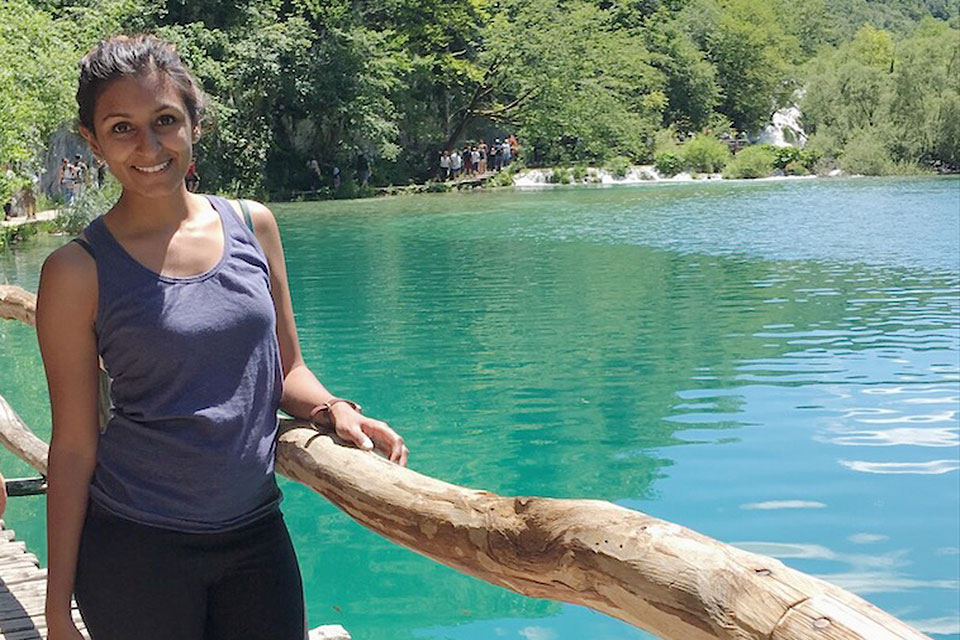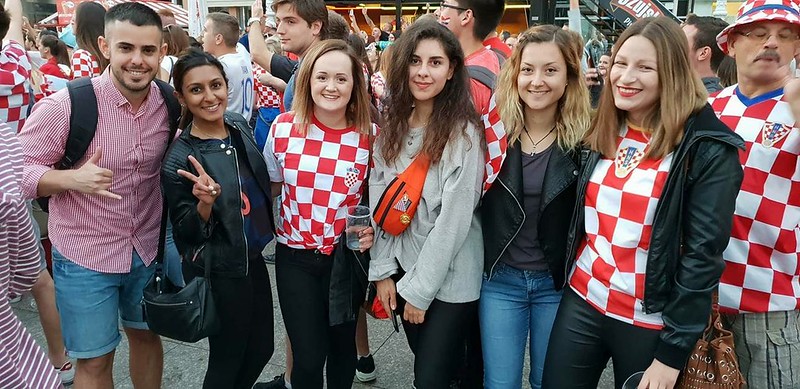Summer Reflections: Exploring “Farmacia” in Croatia
Written By: Nabila Faridi, Third-Year Student Pharmacist
Editor’s Note: This post is the second in a series of Summer Reflections authored by student pharmacists at the School of Pharmacy who participated in study abroad experiences during their summer breaks.
Since my first-year pharmacy school orientation, I’ve heard members of the American Pharmacist Association–Academy of Student Pharmacist (APhA-ASP) reflect on their summers abroad pursuing pharmacy practice internships. Upper classmen mentioned going to countries such as Thailand, Croatia, the United Kingdom, and Spain. Upon researching these experiences, I learned that APhA-ASP represents the U.S. in the International Pharmaceutical Students’ Federation (IPSF). IPSF is a worldwide network of student pharmacists that focuses on advocacy and improving public health. The group organizes student exchange programs (SEPs) for students around the world to give them an opportunity to learn about pharmacy practice from a global perspective. Depending on the country you are interested in visiting, the pharmacy sites may offer internships in the pharmaceutical industry, pharmaceutical research, community pharmacy, or hospital pharmacy.
Selecting My Destination
After hearing positive feedback from a former student, and combining that with my desire to visit Europe, I chose Croatia as my number one choice for a pharmacy internship placement. A few months after submitting my application, I was contacted by the Croatia Pharmacy Student Association (CPSA). They notified me that my application had been accepted and that I would be spending the summer between my second and third years in pharmacy school in their country.
Upon arriving in Croatia, I and my fellow “SEPers” received a warm welcome from the CPSA students as they showed us around Zagreb, Croatia. Tajana and Petra – student pharmacists in Zagreb – helped to ensure a smooth transition for all the students who would be completing their internships in the country. During our first weekend, we visited historical sites, tried local restaurants, and learned how to use public transit. The other students participating in my program came from the U.S., Slovenia, Spain, Turkey, Taiwan, and the Czech Republic. We all became very close during our stay and shared some great laughs and stories about our home countries and cultures.
Day-to-Day Life in Croatia
For my internship, I was placed in a local independent chain pharmacy, also known as a “farmacia” in Croatian. My mentor, Martina, spent part of the day teaching us about Croatian pharmacies, the health care system, and the country and culture itself. We spent the rest of the day compounding medications or assisting with ordering and inventory management.
Once I and my colleagues were done for the day, we explored Zagreb or watched a World Cup match at a local restaurant. Watching Croatia move forward in the World Cup alongside Croatians made this SEP experience even more unforgettable.
On the weekends, the SEP students planned trips around Croatia, such as hiking at the Plitvice Lakes National Park or visiting the rocky beaches in the historic city of Zadar.
Community Pharmacy in Croatia
As a student pharmacist from the U.S., it was interesting to experience pharmacy and health care from a global perspective, as many tasks are completed differently. In Croatia, all citizens are covered by their national health care system, so everyone has access to care. Initially, this seemed like a good idea to me, but after discussing it with my pharmacy mentor, I soon realized it could cause long wait times to see a doctor, as their schedules are often at capacity.
Additionally, prescriptions do not go through a filling process as they do in the U.S. Instead, patients go to the pharmacy, where the pharmacist is able to electronically look up what medications were prescribed, and then provide the patient with the medication. The medication is then billed to the national health insurance and is dispensed. All medications are packaged in dose packs versus stock bottles. The national health care system has a formulary list, which includes preferred medications at low cost to the patient. Most prescribers select therapies from this list. This insurance system also allows the patient, physicians, and pharmacists to avoid billing issues related to preferred formulary items, quantity limitations, and prior authorizations.
Finally, prescriptions – electronic or hard copy – are required to include an indication for use in order to be valid. My mentor explained it is important for pharmacists to know the indication of use so they can properly counsel the patient on the safe use of their medications. These were all unique aspects of Croatian health care that stood out to me.
Reflecting on My Experience
This study abroad experience helped enrich me as a student pharmacist and as an individual. I would encourage all pharmacy students to take a risk and explore similar opportunities that might be outside of their comfort zones. This experience was my first time traveling to Europe, as well as my first time traveling alone. (Travel Tip: If you experience long layovers like I did during my travels, you can maximize your time in a new country by venturing out of the airport for a few hours. I was able to explore Toronto and Amsterdam during my layovers!)
Lastly, I cannot conclude this post without recognizing all the friends I made, the experiences we shared, and the other folks I met along the way. All of these new connections helped create lifetime memories. And to my friends, family, and mentors at home, thank you for supporting me through this opportunity.


